Clem's
Cumberland-Style Pork Sausages
|
|
This style of
pork sausage originates from Cumbria in north-west England (Latitude
54.5000 Longitude -3.2500). I refer to the sausages
which I made as Cumberland-styled rather than Cumberland
sausages because the latter was granted protected Geographical
Indication status in March 2011. Only sausages made within a
defined geographical area to a specific recipe may be called
Cumberland sausages. The UK government's Department for
Environment, Food & Rural Affairs specification for Cumberland
sausages can be found
here. |
|
For my sausages I use the following recipe:
|
Item |
Quantity |
|
Coarse ground pork
(I used 50% pork belly [fatty]to 50% pork shoulder
[lean])
If you do not like pork, you can try using chicken or
other poultry; beef, venison etc. |
800 g |
|
Rusk or bread
crumbs
(water added until doughy consistency is obtained. For
this run, I used 200 g of water (it all depends on the
rusk or breadcrumb characteristics) |
200 g |
You can substitute
pork with beef or a vegetarian mock ingredient.
You can obtain your pork
mince from the butcher or supermarket, making sure that you know
what the fat to lean ration is of the product. I coarse ground
my own mince using Pork Shoulder and Belly Pork.
|
|
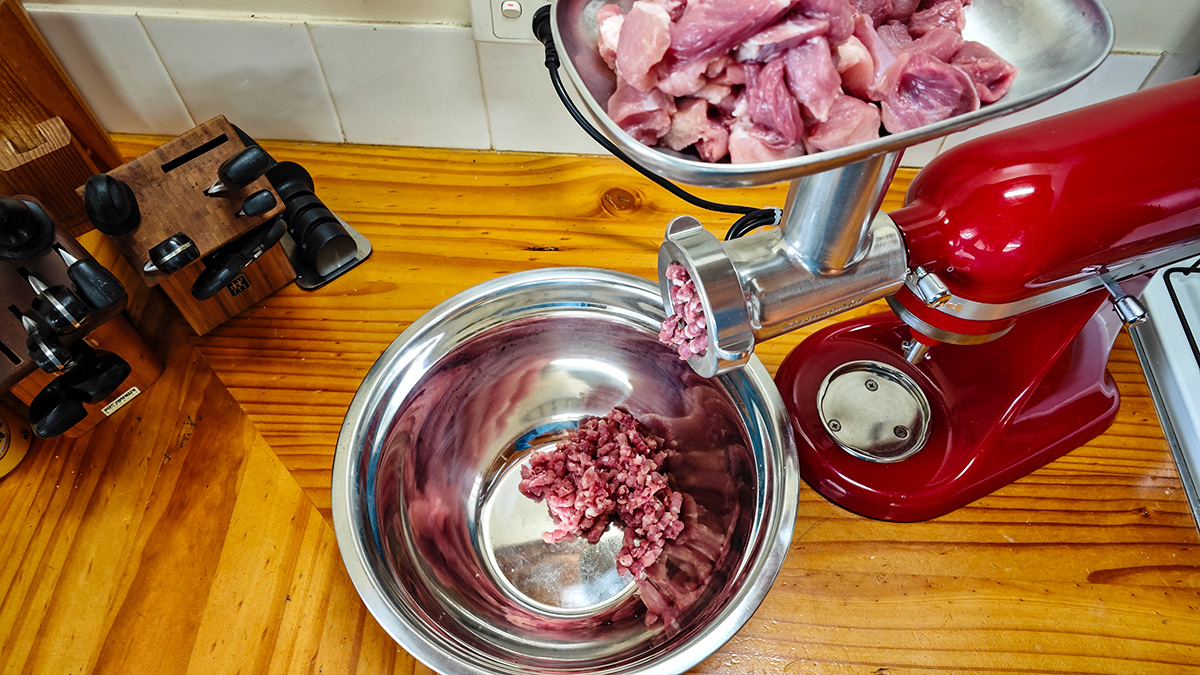
The mince being coarse ground
|
You add the flavouring
ingredients next.
Flavouring ingredients per 1000 g of meat/rusk mix:
|
Salt |
18 g |
|
Pepper |
4.0 g |
|
Thyme |
2.0 g |
|
Sage |
2.0 g |
|
Nutmeg |
0.5 g |
|
Mace |
0.5 g |
|
Cayenne |
0.5 g |
Chill the meat mix in the refrigerator before working in the
spices and herbs.
This will minimize the fats melting during mixing/incorporation.
|
|
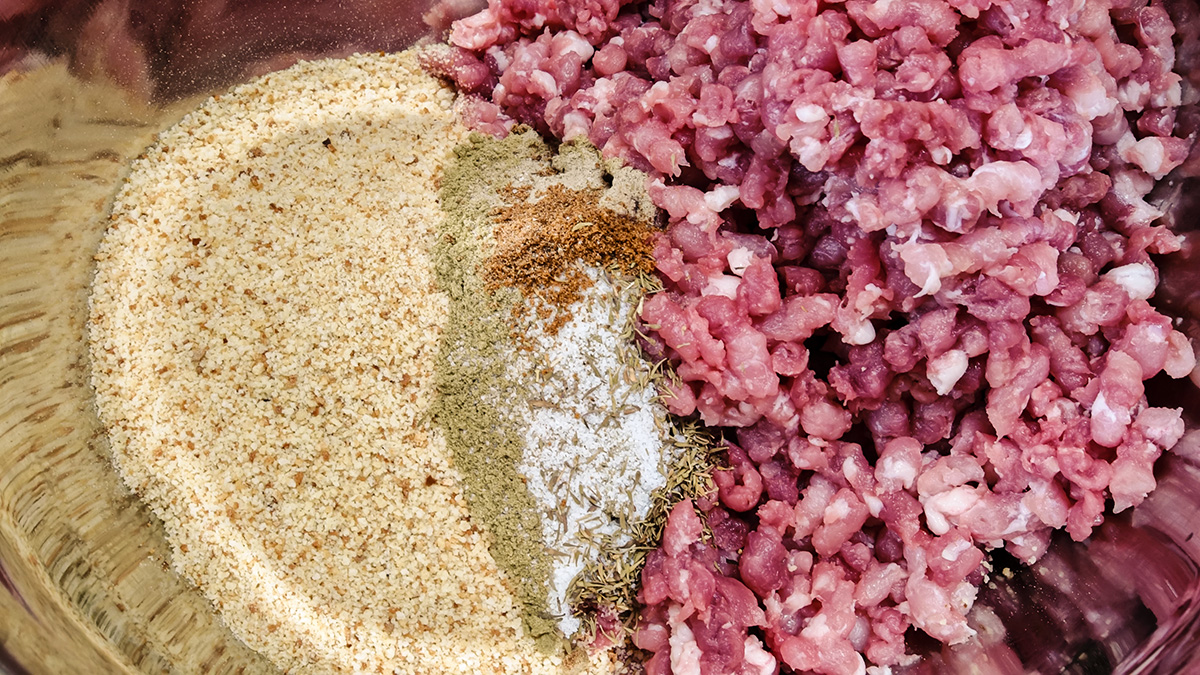
The mince,
breadcrumbs and flavouring ingredients
|
|
I used a dried collagen casing which is prepared by immersion in
water for a couple of hours prior to use. For ease of stuffing,
I used the sausage stuffer attachment to my mixer:
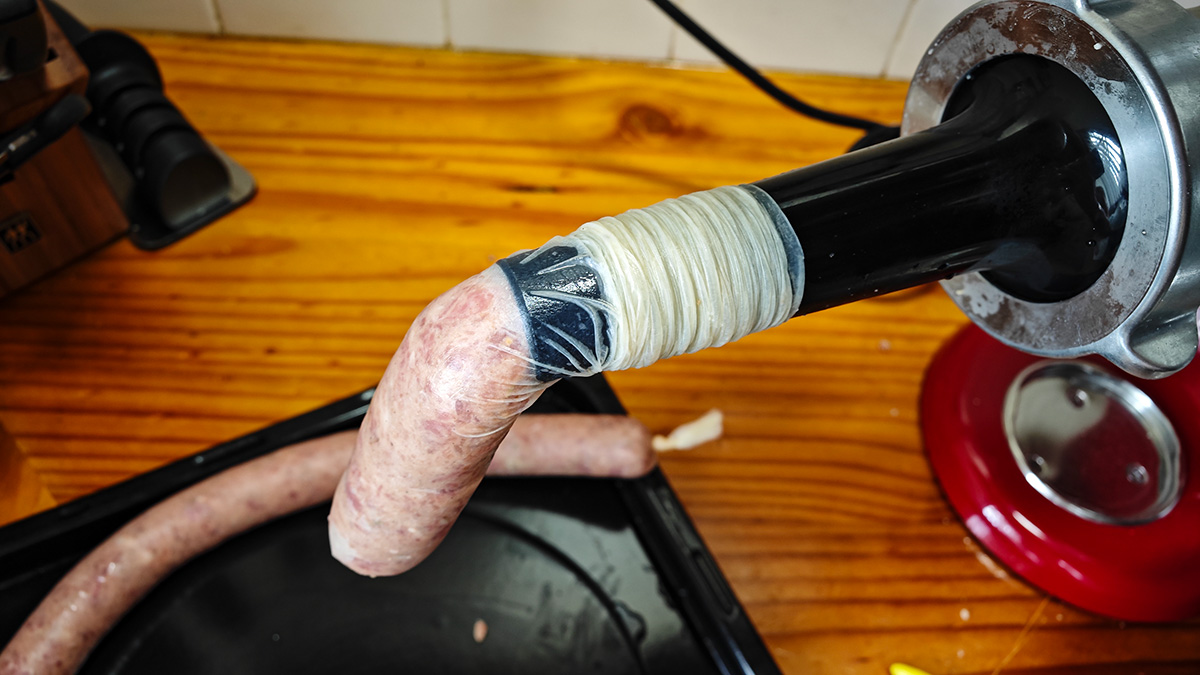
Sausage filling begins. The casing is loaded on
to the nozzle and then tied off at the start of the sausage
length.
|
|
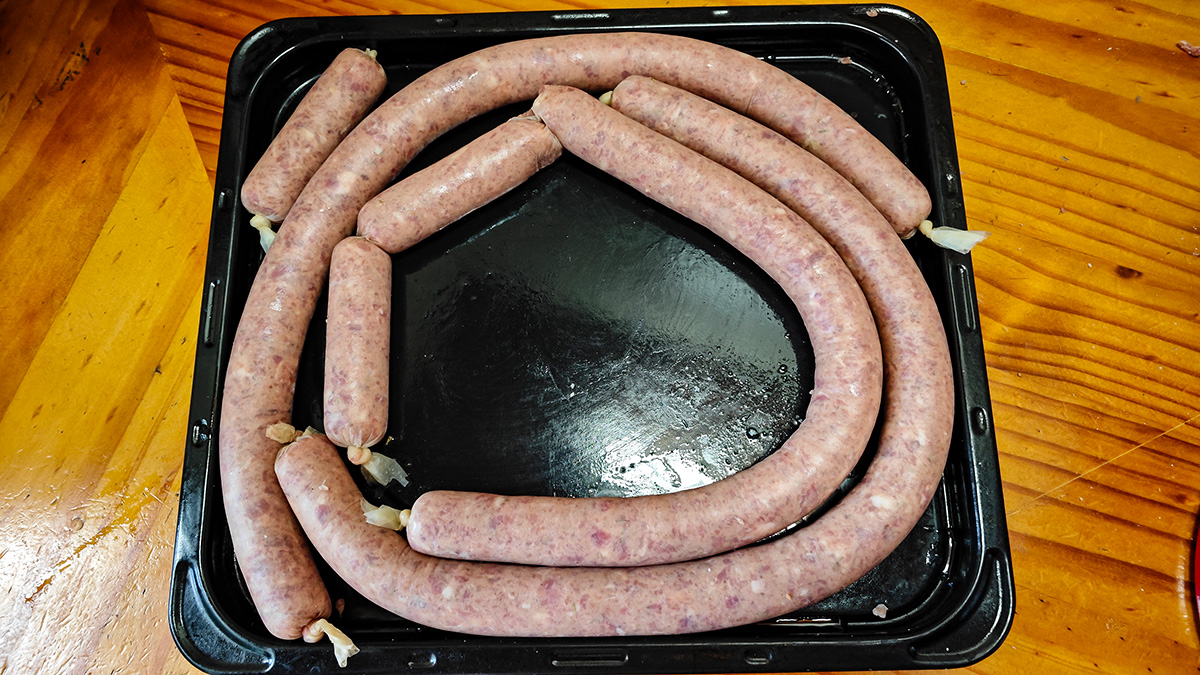
Long lengths of sausage after extrusion
After extrusion, you will need to carefully knead the stuffing
within the casing to ease any trapped air out of the casing
(tricky job). If there are visible air pockets, you can release
the air buy using a pricking implement to poke the casing. When you are happy with the result, you can tie
off both ends of the length of stuffed casing while making sure
that the filling is not overly full and taut (so that you allow
space for the stuffing to be pushed tighter when making sausage
links, and to prevent over-filled sausages bursting during
cooking). Pinch the length of stuffed casing at each point which
you would like there to be a link and then twist the casing
around that link. You should end up with your work looking
like this:
|
|
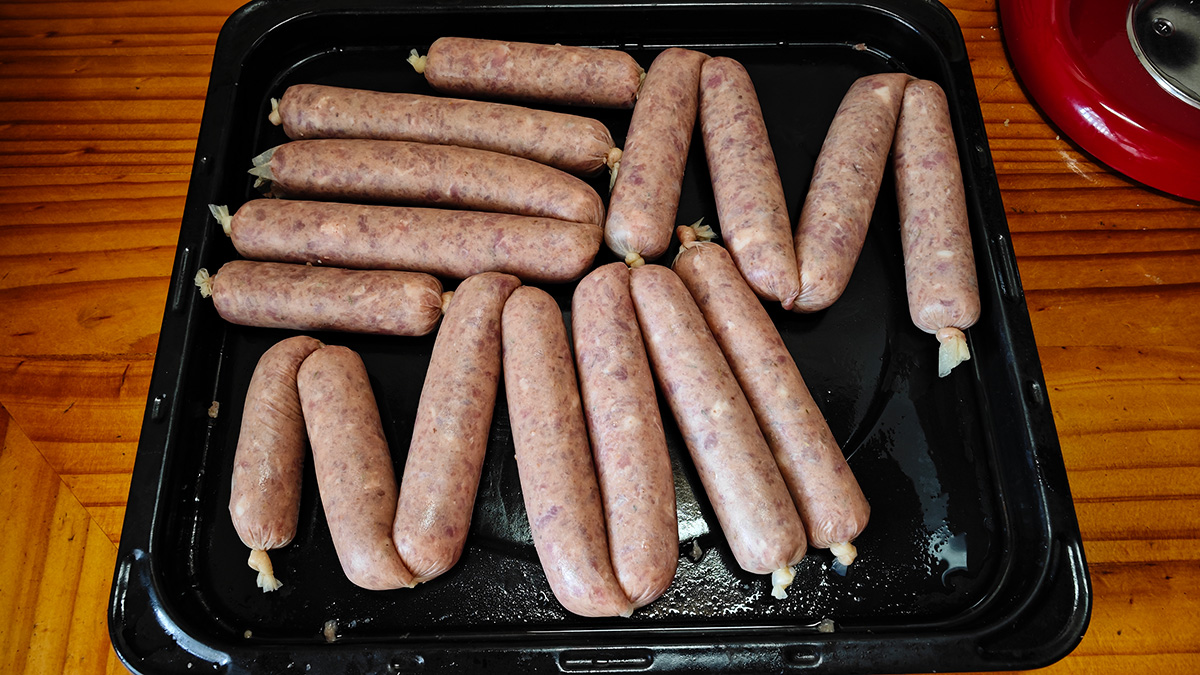
The sausage
lengths tied into links
|
|
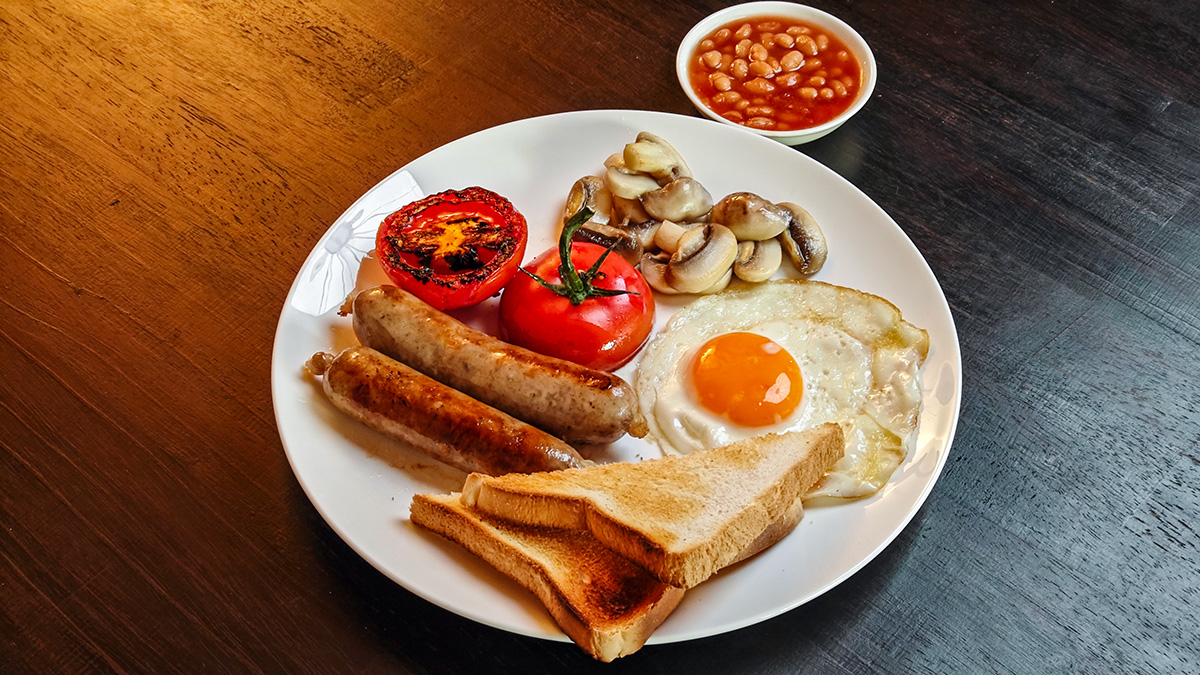
Cumberland-style
sausages for brekkie
|





